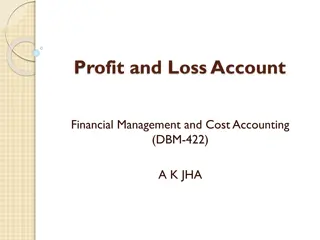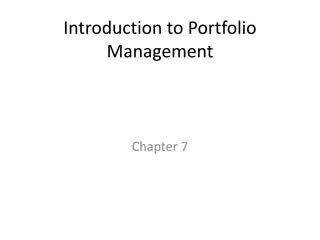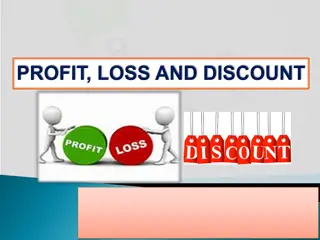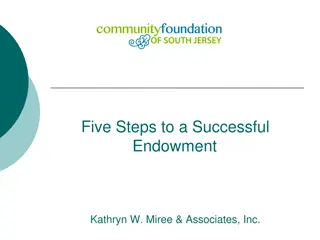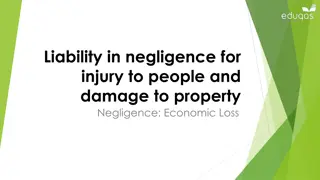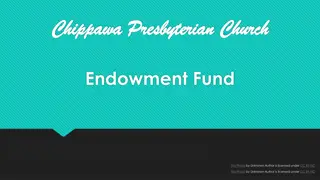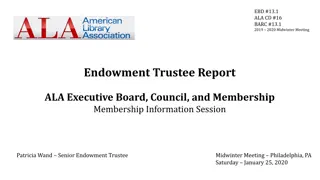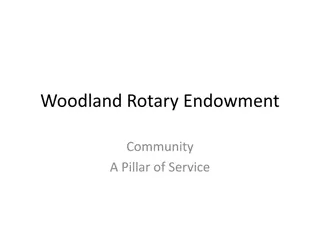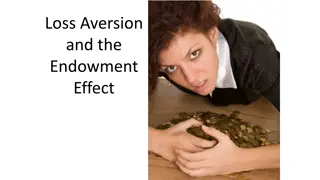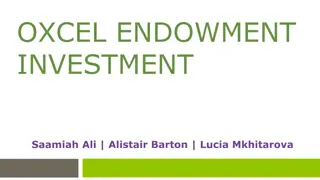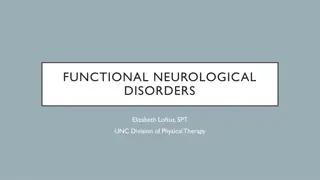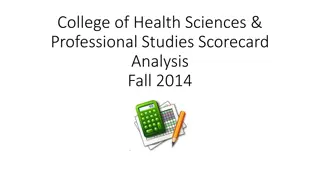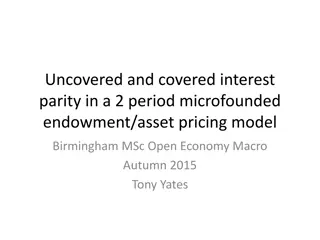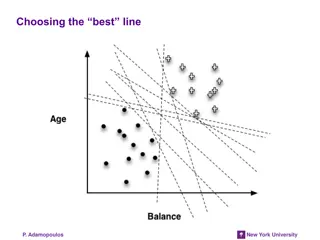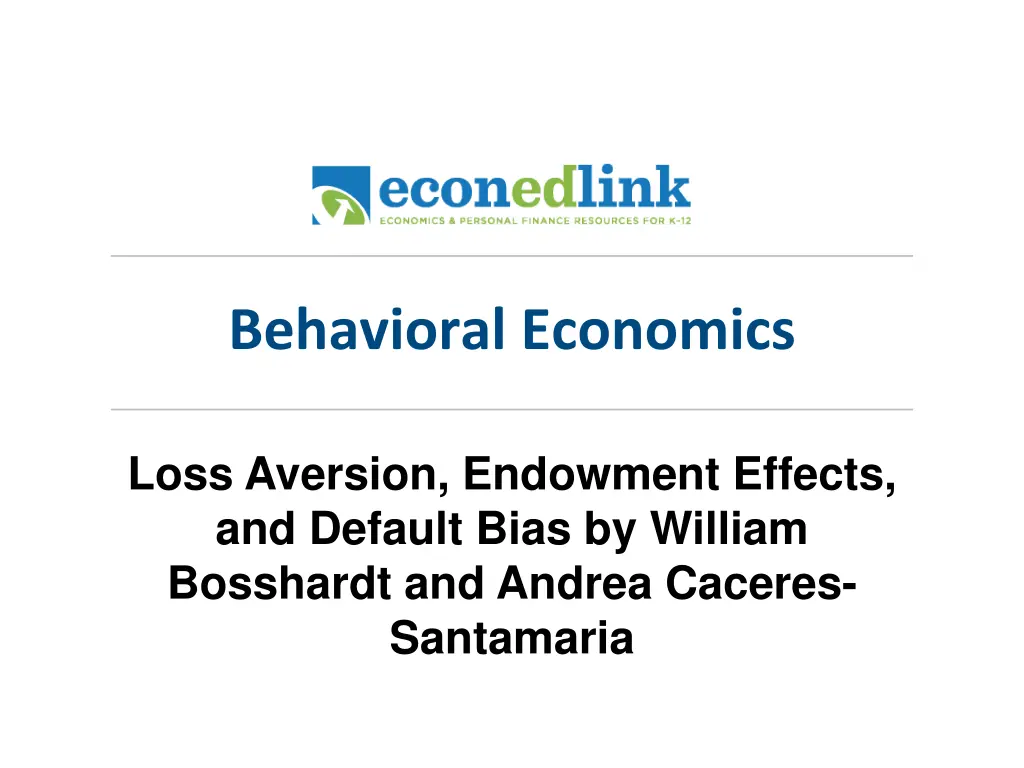
Behavioral Economics: Loss Aversion and Decision Biases
Explore how loss aversion, endowment effects, and default bias influence decision-making in behavioral economics. Understand scenarios and choices that reflect human tendencies in weighing risks and rewards. Delve into the concept of attachment to possessions and its impact on trading decisions.
Download Presentation

Please find below an Image/Link to download the presentation.
The content on the website is provided AS IS for your information and personal use only. It may not be sold, licensed, or shared on other websites without obtaining consent from the author. If you encounter any issues during the download, it is possible that the publisher has removed the file from their server.
You are allowed to download the files provided on this website for personal or commercial use, subject to the condition that they are used lawfully. All files are the property of their respective owners.
The content on the website is provided AS IS for your information and personal use only. It may not be sold, licensed, or shared on other websites without obtaining consent from the author.
E N D
Presentation Transcript
Behavioral Economics Loss Aversion, Endowment Effects, and Default Bias by William Bosshardt and Andrea Caceres- Santamaria
The Issue Econs weigh the costs and benefits of alternatives before making their choices. Humans use costs and benefits but can be influenced by other factors when making choices. Loss Aversion, Endowment Effects, and Default Bias www.EconEdLink.org 2
Terms Endowment effect - people become attached to the item they have and so are less likely to trade it away (value it more). Loss Aversion, Endowment Effects, and Default Bias www.EconEdLink.org 3
Terms Endowment effect - people become attached to the item they have and so are less likely to trade it away (value it more). Loss Aversion people tend to weigh losses (or perceived losses) more than gains (or perceived gains) when making decisions. Loss Aversion, Endowment Effects, and Default Bias www.EconEdLink.org 4
Choices Problem 1: In addition to whatever you own, you have been given $1,000. Now you have been asked to choose one of the following options: 50% chance to win $1,000 OR Win$500 for sure Most choose sure thing. Loss Aversion, Endowment Effects, and Default Bias www.EconEdLink.org 5
Choices Problem 2: In addition to whatever you own, you have been given $2,000. Now you have been asked to choose one of the following options: 50% chance to lose $1,000 OR Lose $500 for sure Most choose gamble. Loss Aversion, Endowment Effects, and Default Bias www.EconEdLink.org 6
Where do we start? Compare two scenarios for a new employee that begins working at a firm. Loss Aversion, Endowment Effects, and Default Bias www.EconEdLink.org 7
Offer #1 Welcome to FunCorp company. As a new employee, we are pleased to offer you a retirement savings plan. The company will match your contributions to your savings plan dollar for dollar up to 5% of your annual salary. Please contact the human resources department at extension 52 should you wish to contribute to establish a savings plan. Loss Aversion, Endowment Effects, and Default Bias www.EconEdLink.org 8
Offer #2 Welcome to FunCorp company. As a new employee, we are pleased to offer you a retirement savings plan. The company will match your contributions to your savings plan dollar for dollar up to 5% of your annual salary. In two weeks, we will automatically begin deducting 5% from your paycheck, match it with another 5%, and deposit the sum into your retirement savings account unless you contact human resources at extension 52 and request otherwise. Loss Aversion, Endowment Effects, and Default Bias www.EconEdLink.org 9
Terms Endowment effect - people become attached to the item they have and so are less likely to trade it away (value it more). Loss Aversion people tend to weigh losses (or perceived losses) more than gains (or perceived gains) when making decisions. Default Bias people tend to stick with the initial option that is presented when making decisions Loss Aversion, Endowment Effects, and Default Bias www.EconEdLink.org 10
Default Bias Does automatic enrollment make a difference? No automatic enrollment: 37.4% Automatic enrollment: 85.9% Source: Madrian, Brigitte C., and Dennis F. Shea. 2001. The Power of Suggestion: Inertia in 401(k) Participation and Savings Behavior . Loss Aversion, Endowment Effects, and Default Bias www.EconEdLink.org 11
Comparing Econs and Humans Lesson 1 Econs Humans Use system 2 for all their decisions. Use system 1 to make many routine decisions. Carefully weigh costs and benefits to make decisions. Are not subject to cognitive biases when making decisions. Make decisions on past experience or quick judgments. 2 Are subject to cognitive biases when making decisions and so may use anchors and fall into relativity traps. 3 Make decisions by weighing costs and benefits equally. Are not influenced by their current situation when making decisions. Tend to weigh losses greater than gains. Tend to bias to the default or to things they already have. 4 May discount costs and benefits that occur in the future. May have self-control problems and discount the future too much or be subject to present bias, causing inconsistent decisions. May make decisions based on fairness or for other emotional factors such as whether work is meaningful. 5 Only use costs and benefits to make decisions. Loss Aversion, Endowment Effects, and Default Bias www.EconEdLink.org 12

